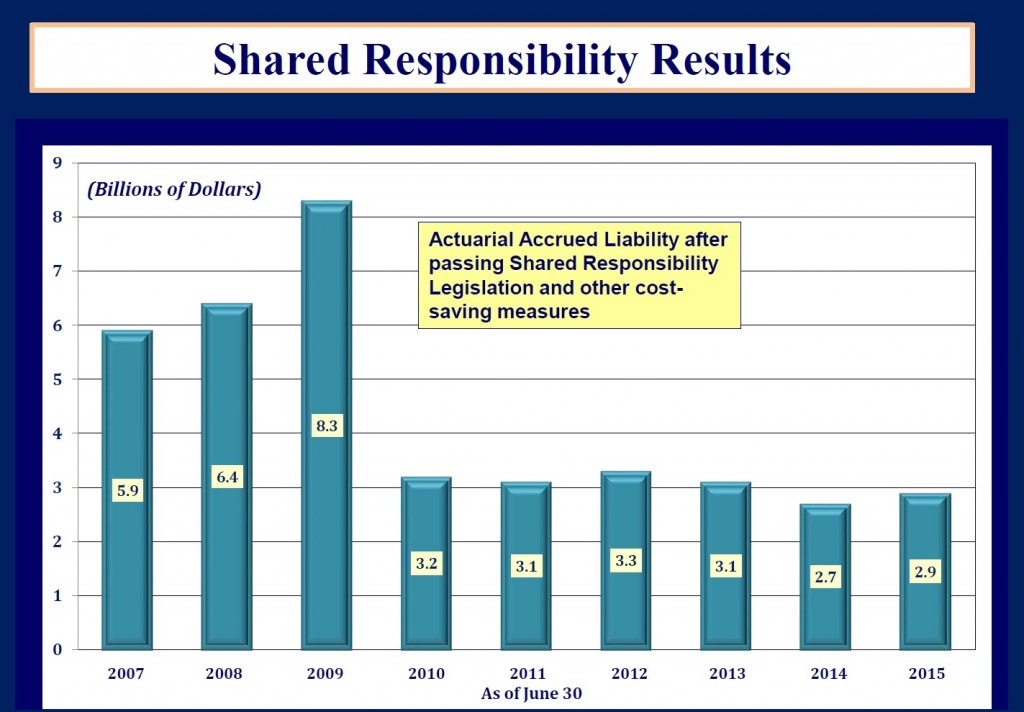The Foundation of Employee Health: A Shared Responsibility

The Importance of Employee Health and Well-being in Modern Workplaces
In today's fast-paced and ever-evolving work environments, employee health and well-being have become critical concerns. Declining mental health, poor work-life balance, lack of psychological safety, and insufficient leader support are among the main issues affecting employee well-being. Many employees are experiencing burnout and workplace stress, often working long hours without being able to disconnect. Others face unsupportive leaders or job insecurity, which further exacerbates their challenges.
These problems are closely tied to the new stresses of modern work environments, including the growing desire for flexible work models, a decline in overall employee engagement, and rapid technological changes. Mental health and stress are now the leading causes of absence from work. According to the Chartered Institute of Personnel and Development (CIPD) 2025 Report, the average number of absence days per employee per year has risen to 9.4 days, the highest in over 15 years. Common causes of these absences include mental health issues, stress, and minor illnesses.
Organizations are increasingly taking steps to identify and reduce workplace stress. Research indicates that more employers are now taking mental health seriously and are stepping up efforts to raise awareness across their workforces. The new global management system standard on occupational health and safety, ISO 45001, places physical, mental, and cognitive health at its core, emphasizing the need to prevent occupational ill-health and bring quantifiable benefits to both workers and organizations.
The ISO standard requires that health hazards, including psychosocial risks such as workload, work hours, and bullying, be identified and controlled. Additionally, health risks at workplaces are increasing due to factors like an aging workforce, inactivity, mental health issues, obesity, smoking, alcohol consumption, and poor nutrition.
Understanding Employee Health and Well-being
Employee health and well-being is a holistic concept that encompasses physical, mental, emotional, and social health within the workplace. It also includes the happiness of employees in their work environment. Understanding this concept is crucial for creating a healthy and productive workplace. Its growing importance reflects the recognition that a healthy and supported workforce is a strategic asset for business success, not just a matter of corporate responsibility.
Health can be defined as being free from illness or injury, while well-being is broader, incorporating mental health, economic and social well-being, and physical, mental, and emotional aspects. Social well-being focuses on building strong relationships and supportive networks within the workplace to foster a sense of belonging and community.
The World Health Organization (WHO) takes a holistic approach to health, defining it as "the state of being comfortable, healthy, or happy." Workplace well-being is about helping people maximize their physical and mental health. Countries in the West are witnessing a shift in emphasis around health and well-being at work, focusing on promoting mental well-being and supporting healthy lifestyles. There are now safer and healthier workplaces than ever before.
The International Labour Organization (ILO) states that workplace well-being relates to all aspects of working life, from the quality and safety of the physical environment to how workers feel about their work, their working environment, and work organization. Considering Maslow’s hierarchy of needs, once basic needs within the workplace are met—such as occupational health and safety—people can move up the hierarchy. Workplace well-being can help fulfill the self-fulfillment aspects of Maslow’s hierarchy.
Why Employee Health and Well-being Matters
Health has become a global public policy issue, with increased focus on disease prevention and reducing mortality. Factors such as poor health lifestyles and social determinants of health, shaped by economic activities and global policy, are driving this focus. This can be seen in initiatives like the UN’s Sustainable Development Goals. As a result, health risks and health promotion within the workplace are receiving renewed attention and being considered within the global context of public health policy.
Employee well-being matters because it can lead to increased productivity and performance, higher retention rates, reduced absenteeism and healthcare costs, improved company culture and reputation, and reduced burnout. A 2025 report on health and well-being at work showed that 52% of workers reported feeling bored, 62% felt miserable, and 63% felt lonely. While these numbers may seem small, feelings of exhaustion and pressure should be of concern to employers, as they can lead to stress and potentially negative outcomes for employees.
Poor physical and mental health, along with workplace factors like high workloads, excessive pressure, exhaustion, poor relationships with colleagues, and poor perceptions of line managers, are associated with a greater feeling that work negatively affects health. Poor employee health and well-being can have devastating impacts on organizations, making it essential to understand these negative effects.
The Benefits of Investing in Employee Health and Well-being
Investing in employee health and psychological well-being can significantly enhance organizational performance and workplace culture. The American Psychological Association (APA) notes that investing in employee well-being increases profitability. Studies show that 57% of employees say work-related stress negatively affects their performance, leading to lower productivity, emotional exhaustion, and a desire to leave their jobs. These issues directly influence a company’s profitability, yet many company leaders underestimate these struggles.
The benefits of investing in health and well-being in the workplace include 44% better employee morale and engagement, 35% increase in a healthier and more inclusive culture, and 31% lower sickness and absence. Studies show that well-designed wellness programs have a return on investment of $1.50 to $3 per dollar spent over a two- to nine-year period. Thriving and healthy workforces typically perform 2.2 times above average compared with organizations that do not invest in their employees’ health and well-being.
The Pillars of Employee Health and Well-being
Reports indicate that globally, 31% of adults don’t get enough physical activity, which is problematic as inactive lifestyles increase the risk of diseases like Type-2 diabetes, cardiovascular disease, and cancer. Physical activity improves cognitive functions, making it easier for people to concentrate and perform tasks efficiently. A healthy workforce could also lead to lower insurance premiums, which account for 7.9% of employee compensation on average.
The Oyster Team observes that professional growth and fulfillment, meaningful relationships and connections, belonging and shared purpose, physical health and well-being, and financial security and peace of mind form the pillars of employee health and well-being. Additionally, mental, emotional, or psychological well-being, as well as financial, career, and social well-being, are important pillars.
The World Health Organization’s healthy workplace model emphasizes improving, mobilizing, and assembling the physical work environment, assessing and prioritizing personal health resources, planning, improving, evaluating, and executing psychosocial work environments, while ensuring leadership engagement, work involvement, and ethics and values. The model identifies five keys to success: leadership commitment and engagement, involving workers and their representatives, business ethics and legality, using a systematic, comprehensive process to ensure effectiveness and continual improvement, and sustainability and integration.
Key Challenges and Strategies to Adopt
To ensure employee health and well-being, organizations must address several challenges, including low employee engagement, lack of management buy-in, budget constraints, the one-size-fits-all approach, and remote work concerns. The Oyster Team suggests six initiatives that employers can implement to enhance the overall well-being of their workforce: creating a workplace culture where employees feel heard and valued, ensuring ongoing support and addressing concerns proactively, offering resources that promote physical and mental well-being, helping employees grow and stay engaged through meaningful guidance, supporting employees with perks and rewards that enhance their overall quality of life, and implementing flexible work arrangements to promote work-life balance.
Practices suggested in literature include adopting holistic strategies to address all dimensions of well-being, measuring and evaluating programs, investing and securing future funding, gaining management support, listening to employees, cultivating a supportive culture, and providing professional development opportunities. Trends such as the shift towards remote and hybrid work models, increasing awareness of mental health issues, the rise in digital tool usage for work and digital well-being, personalization, social connectivity, sustainability, inclusivity and diversity efforts, financial well-being support, continuous learning and growth, are increasingly recognized as essential to employee well-being.
Conclusion
In conclusion, the basis and basics of employee health and well-being should be the responsibility of all. Employers and employees owe it to themselves and their organizations to ensure health and well-being by supporting strategies that overcome lack of engagement and unwillingness to participate. The three key recommendations to Human Resource Managers by the CIPD Report, 2020, are to build mentally healthy workplaces based on prevention, invest in managers to boost employee well-being, and make more of occupational health (OH).












